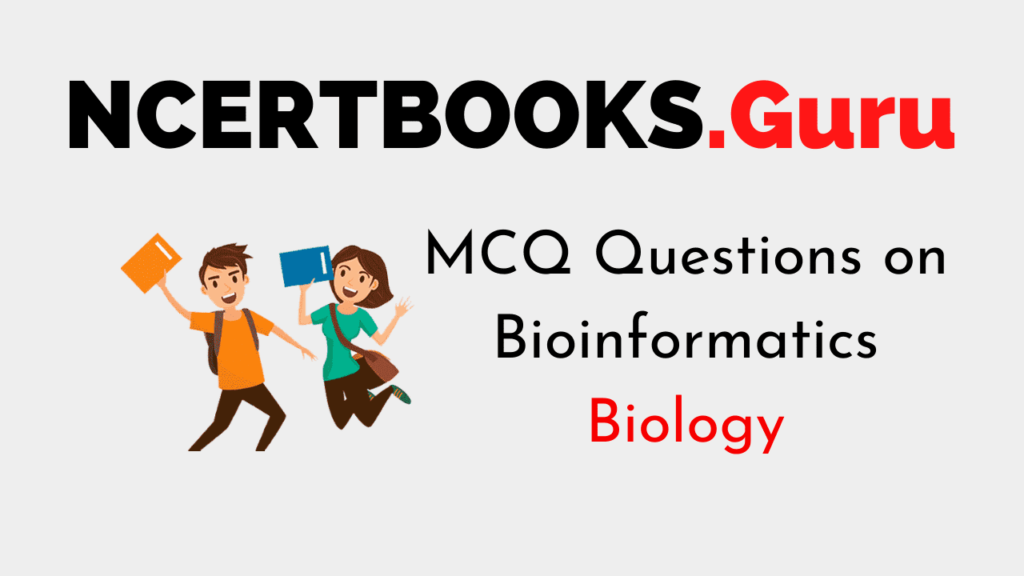Biology is the study of life. Below, You will find a list of Biology MCQ Questions as per the latest prescribed syllabus. Ace up your preparation with the Objective Questions available on Virus and enhance your subject knowledge. Understand the concept clearly by consistently practicing the Multiple Choice Questions and score well in your exams.
MCQ Questions on Virus
1. Which of the following is an example of Homology and similarity tool?
(a) BLAST
(b) RasMol
(c) EMBOSS
(d) PROSPECT
Answer
Answer: (a) BLAST.
2. In which year did the SWISSPROT protein sequence database begin?
(a) 1988
(b) 1985
(c) 1986
(d) 1987
Answer
Answer: (d) 1987.
3.Which of the following scientists created the first Bioinformatics database?
(a) Dayhoff
(b) Pearson
(c) Richard Durbin
(d) Michael.J.Dunn
Answer
Answer: (a) Dayhoff.
4. The human genome contains approximately__________.
(a) 6 billion base pairs
(b) 5 billion base pairs
(c) 3 billion base pairs
(d) 4 billion base pairs
Answer
Answer: (c) 3 billion base pairs.
5. Which of the following tools is used for the identification of motifs?
(a) BLAST
(b) COPIA
(c) PROSPECT
(d) Pattern hunter
Answer
Answer: (b) COPIA.
6. The first molecular biology server expasy was in the year __________.
(a) 1992
(b) 1993
(c) 1994
(d) 1995
Answer
Answer: (b) 1993.
7. What is the deposition of cDNA into the inert structure called?
(a) DNA probes
(b) DNA polymerase
(c) DNA microarrays
(d) DNA fingerprinting
Answer
Answer: (c) DNA microarrays.
8. The identification of drugs through the genomic study is called__________.
(a) Genomics
(b) Pharmacogenomics
(c) Pharmacogenetics
(d) Cheminformatics
Answer
Answer: (b) Pharmacogenomics.
9. Which of the following compounds has desirable properties to become a drug?
(a) Fit drug
(b) Lead
(c) Fit compound
(d) All of the above
Answer
Answer: (b) Lead.
10. Proteomics refers to the study of __________.
(a) Set of proteins in a specific region of the cell
(b) Biomolecules
(c) Set of proteins
(d) The entire set of expressed proteins in the cell
Answer
Answer: (d) The entire set of expressed proteins in the cell.
11. The process of finding the relative location of genes on a chromosome is called __________.
(a) Gene tracking
(b) Genome walking
(c) Genome mapping
(d) Chromosome walking
Answer
Answer: (c) Genome mapping.
12. The computational methodology that tries to find the best matching between two molecules, a receptor and ligand are called __________.
(a) Molecular fitting
(b) Molecular matching
(c) Molecular docking
(d) Molecule affinity checking
Answer
Answer: (c) Molecular docking.
13. Which of the following are not the application of bioinformatics?
(a) Drug designing
(b) Data storage and management
(c) Understand the relationships between organisms
(d) None of the above
Answer
Answer: (d) None of the above.
14. The term “invitro” is the Latin word which refers to__________.
(a) Within the lab
(b) Within the glass
(c) Outside the lab
(d) Outside the glass
Answer
Answer: (b) Within the glass.
15. The stepwise method for solving problems in computer science is called__________.
(a) Flowchart
(b) Algorithm
(c) Procedure
(d) Sequential design
Answer
Answer: (b) Algorithm.
16. The term Bioinformatics was coined by __________.
(a) J.D Watson
(b) Pauline Hogeweg
(c) Margaret Dayhoff
(d) Frederic Sanger
Answer
Answer: (b) Pauline Hogeweg.
17. The laboratory work using computers and associated with web-based analysis generally online is referred to as __________.
(a) In silico
(b) Dry lab
(c) Wet lab
(d) All of the above
Answer
Answer: (c) In silico.
18. Which of the following is the first completed and published gene sequence?
(a) ΦX174
(b) T4 phage
(c) M13 phage
(d) Lambda phage
Answer
Answer: (a) ΦX174.
19. The laboratory work using computers and computer-generated models generally offline is referred to as __________.
(a) Insilico
(b) Wet lab
(c) Dry lab
(d) All of the above
Answer
Answer: (c) Dry lab.
20. The computer simulation refers to __________.
(a) Dry lab
(b) Invitro
(c) In silico
(d) Wet lab
Answer
Answer: (c) In silico.
